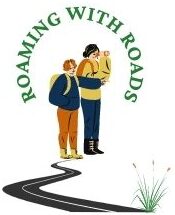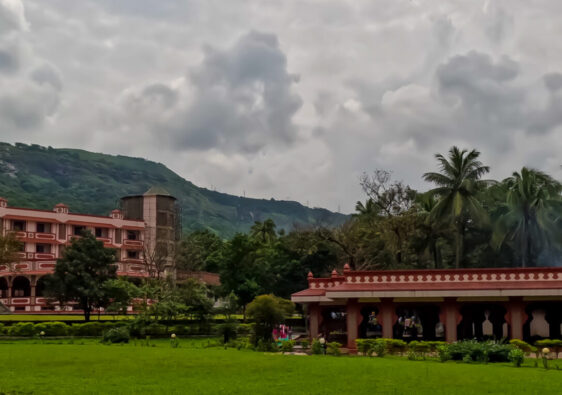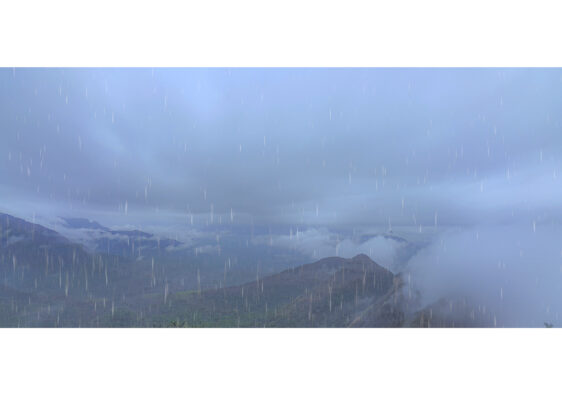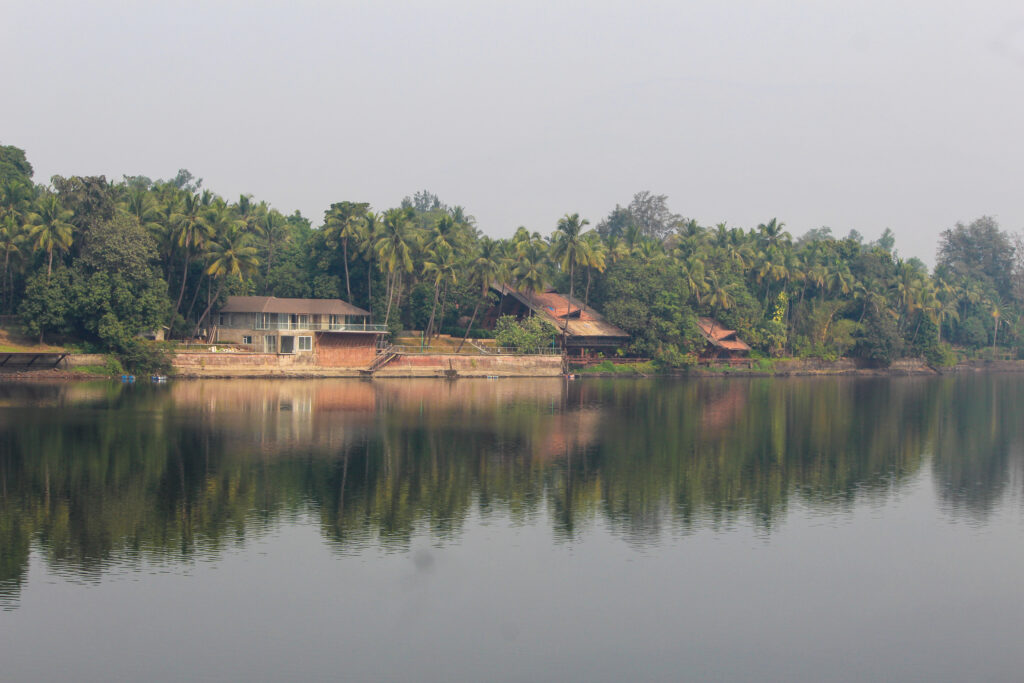
To detox our mind from urban chaos, we were looking for a weekend break. A place nearby yet away from home. Searching on Airbnb, we came across the ‘Benchmark Green,’ a plot with row house dwellings with a view of the hills and far from the crowd. It looked perfect for a short break where one could relax on the balcony reading a book while watching the sun move behind the hills or simply gaze at the clearer sky during the nighttime.
We are regularly traveling every weekend and hence are always on a shoestring budget. But our travel needs are always simple. A swimming pool with a mountain view, high-end accommodations, and premium transportation and exceptional dining—all these things do not entice us. A homestay or (in a very rare case, a hotel) with basic amenities and cleanliness would suffice.
After all, while traveling, we do not want to repeat the things that we do back at home or at the workplace. The purpose of travelling, we believe, should be to declutter minds and live in the present moment. The moment that is here and now. And it can be done when we travel slowly, connecting with nature, places, and people in a strange town. A walk in the village or in the woods listening to the sounds of nature is much better than the cacophony of loud music played in the resort. A conversation with a stranger on the open road gives more satisfaction than meaningless gossip. Unlike the man-made nature resorts that proclaim to be natural, we ensure that our stay is close to nature, which is raw and wild.
This short journey has taught us a vital lesson that sometimes it is of utmost importance to slow down in life. In today’s age, when digital technologies have become a major part of people’s lives and everything is fast-paced, man is still a tiny component in front of nature.
Why did we choose Vangani?
Peace dwells in remotely resting places. Vangani is a lonely town in Maharashtra on the Mumbai-Karjat route. It has a picturesque landscape with the Sahyadri range on the backdrops, a calmly flowing Ulhas River with open lands around it. As the demand for property keeps increasing, in the coming years Vangani will become urbanized and over-spilled just like Badlapur and Ambernath. Before this happens, we wanted to smell the scent of this strange town while some corners of it are still cool, green, and shady.
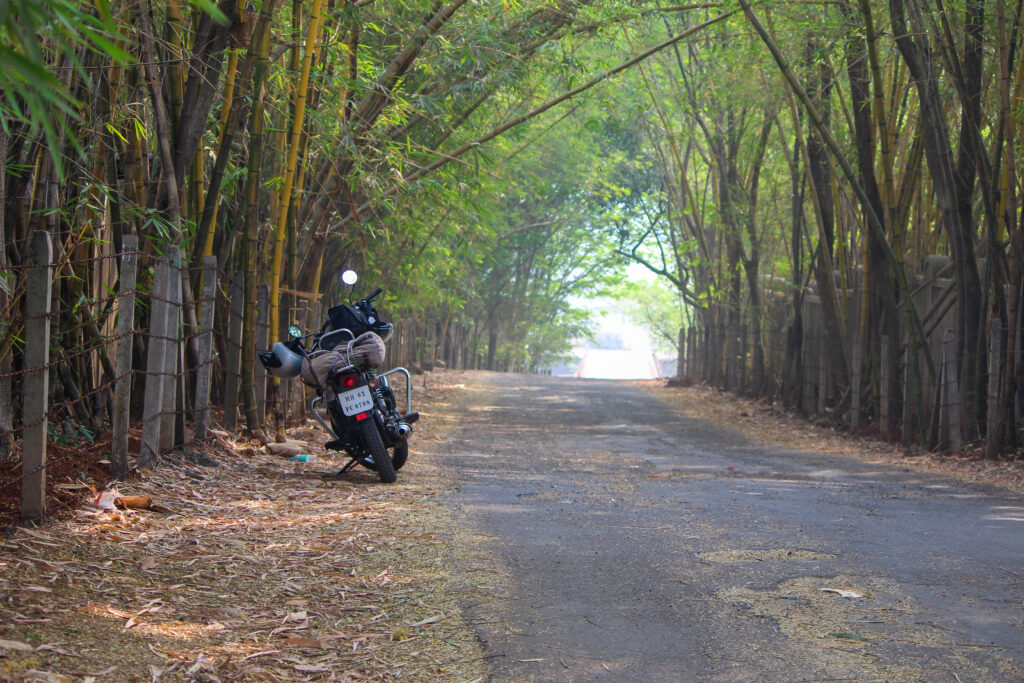
Vangani is just 2 to 3 hours drive from Mumbai. It can be reached through the Panvel-Karjat route or through Airoli-Badlapur route. We took the Karjat route as it is more picturesque; at least to some extent. Sighting a flock of pinkish-hued flamingos flying above Vashi creek brought happiness and inspired hope. The ride after the Shedung toll plaza is pretty smooth. One can feel the wind and take in the scenery. The feeling of freedom, the wind on the face and body, the fresh air and the beckoning of the unexplored destination gave immense pleasure.
I knew a place called ‘Bhilavle’ bypassing the Chauk-Karjat-Murbad road. It is one of the peaceful locations in the Karjat-Khalapur area, exposing a dam and a lake around it. Of course the best time would be just after the monsoon to witness the greenery, waterfalls, and the cozy weather. But be that as it may, we are travelers for all seasons. We do not believe in the concept of ‘Best Time to Visit’. One should be open and ready to accept whatever the roads offer. What you make out of the trip remains an integral part of the journey. Whether you engage in new experiential and cultural aspects of learning that transform the way you see the world. Or are you ready to broaden your perspective? Because travel offers some valuable lessons that go far beyond the destinations you visit.
We stopped near the dam under the shade of the bamboo trees planted on either side of the road. Although bamboo is a grass, it has a woody stem and can grow very tall, giving it a tree-like appearance. The sunlight perfectly penetrated between the bamboo and fell in patches on the road and on bamboo leaves. The morning light infused a special quality into portrait photography. There’s something about taking photos in the magical morning light that makes me happy. A kind of softness wraps around the subject. The play of light and shadow added a sense of drama and dimension to the image.
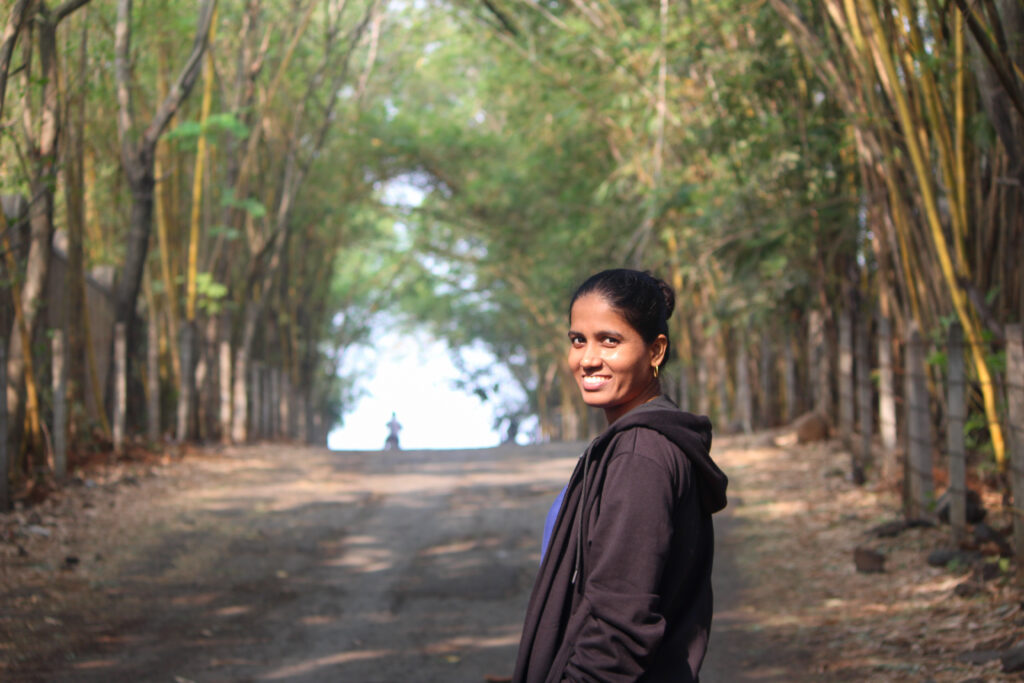
☝️Playing with light and shadow👇
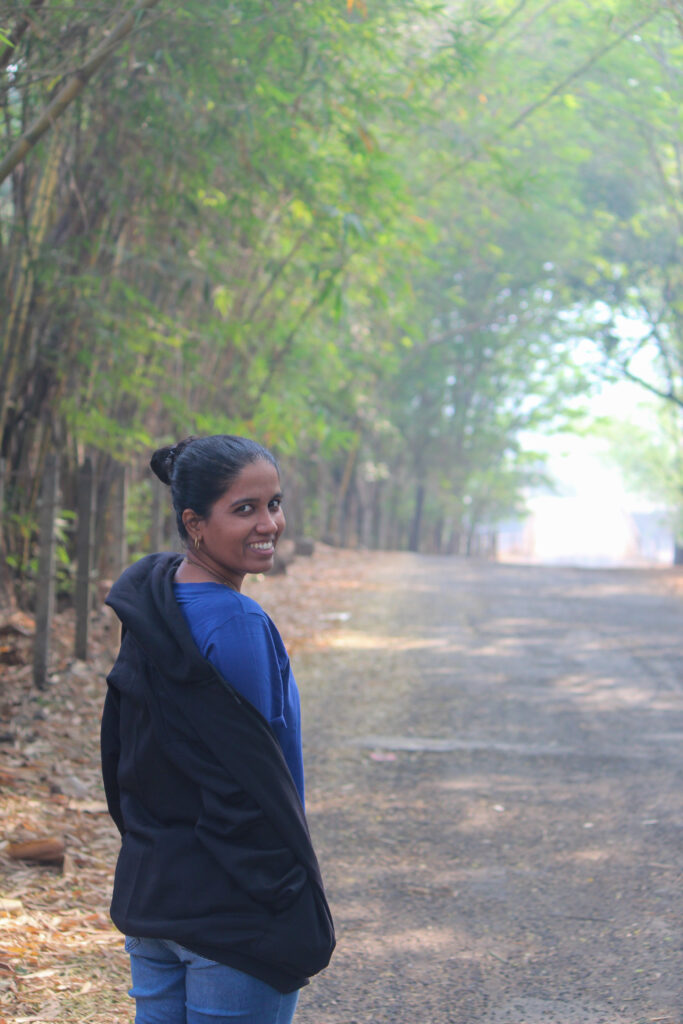
Having done photography, we had homemade breakfast—‘dosa & chutney’ on our automobile furniture (motorcycle)—and went ahead for a walk in the village. Bhilavle is a small, peaceful village with few farmhouses and private bungalows. Touching the water body is ‘Campistaan’—an organization offering camping experiences. Two tribal hamlets, ‘Katkarwadi‘ and ‘Dhangarwadi,’ located at a close range from each other, look contrastingly striking, giving a rustic feeling. Women washed clothes near the well while some pumped water from wells into buckets. We could hear their soft and quiet chuckle float on the warm breeze. An elderly man tended goats on a small hillock. Children played in the hazy field surrounded by buffaloes. The landscape of the village was bathed in morning sunlight. We sat on the open field and felt refreshed and renewed after spending some quiet time observing the tranquil pastoral scene.
The village road goes straight and connects to the Karjat-Khopoli state highway. A detour on the highway goes to another beautiful village, ‘Palasdari’. It is known for its pretty view of the dam and a trek to Palasdari Fort (also known as Songiri Fort). Although the dam and the surrounding village are frequently visited during the rainy season, the trek is best done in winter. The forest is very dense in the monsoon, and it becomes difficult to find the path due to overgrown bushes. Another attraction of Palasdari is the Math (temple complex) of Shree Swami Samarth Maharaj.
After taking a left turn from Karjat Phata, we continued the ride towards Vangani. The roar of the vehicular traffic lessened to some extent. On the way, Dhom Lake in Bhivpuri is unmissable. In the year 2022, just after the monsoon, while strolling in Bhivpuri, we landed in Diksal village, where we discovered this lake nestled between the hills. The hills were verdant green with bountiful butterflies in flight.
Read the blog post of the hike to to the lake 👇
As we kept cruising on the empty roads, the sight of the railway track meandering through the hills brought back memories of our 21 km long hike from Neral to Matheran on the mini train track done last monsoon in 2024.
Read the experiences of the hike on the Neral-Matheran Rail Track 👇
Once we crossed the foothill of the Matheran ghat road in Neral and got nearer to Vangani, the view of the mountain ranges of Chanderi & Nakhind was apparently visible on the East. Each had their distinctive but formidable outlines of ridges, pinnacles and solid rock. Upon reaching Vangani, everything seemed to be in a hurry. Regardless of the busy market and the construction works, the small town had an unsophisticated charm in the hinterland. Leaving the Neral-Badlapur road, we entered the Vangani Gaon and passed a mix of small houses, a few farmhouses, and bungalows to reach our villa.
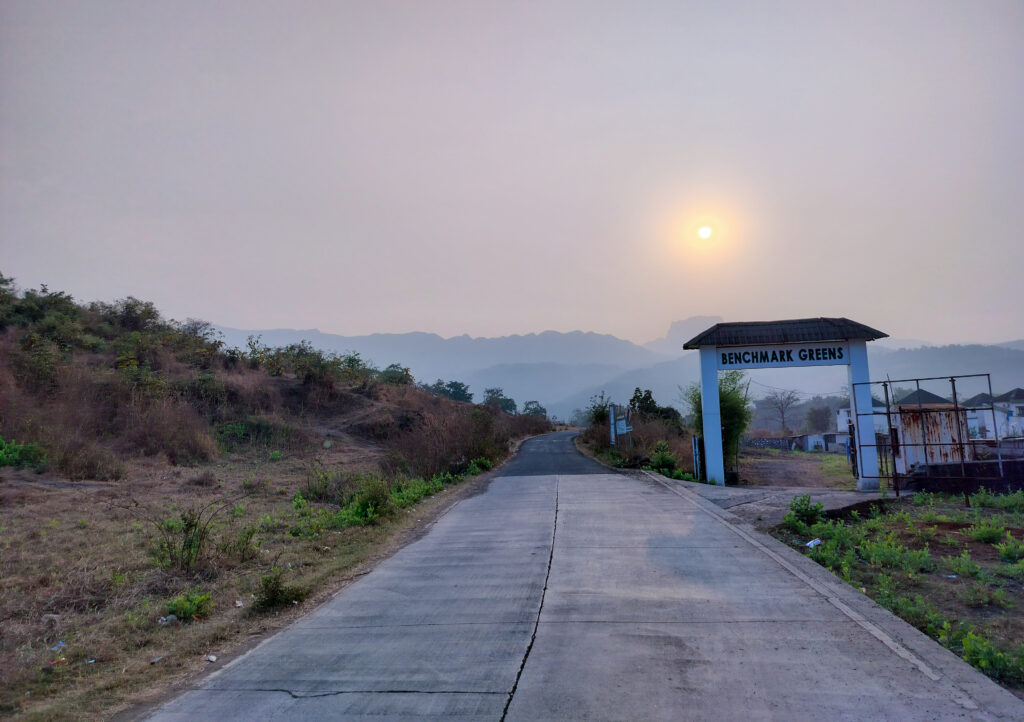
The property with around 15 row houses was tucked away in a scenic spot where one could admire the natural surroundings. There were several options for cross-country hikes (popular during monsoon) beyond the edge of human growth. The single-story room had a balcony with a spectacular view of the green rolling hills. Some books adorned the shelf. Our host allowed us to use the kitchen that had all the necessary utensils for cooking. We managed to bring groceries from the market for the night meal.
A 20-30 minute walk on the road ahead of our villa went straight towards ‘Bedisgaon‘ – a tribal hamlet at the foothills of a forest. It got cooler as we walked among the trees. We met an elderly couple walking on the forested trail towards their house on the hills. We had thought that Bedisgaon was the last village. It surprised us to know that a 1-hour climb on this trail went to another tribal village, ‘Waghinichi Wadi’. Through them we came to know that this trail also leads to Nakhind (700m). Its extensive ridge has a ‘hole’ in the rock at its northern end. And descending from this end, one can go to Matheran via Peb Fort. The trek that we would do someday soon. The old man happily agreed to guide us towards the ridge whenever we came next time.
We watched them walk until they disappeared in the curvy trail of the forest. The jungle babblers romped through the trees while a coppersmith barbet sang somewhere in the distant forest. We sat on a boulder of a dry stream and took a deep breath of fresh forest air. We used this time to express gratitude to the trees, the wildflowers, the water, and all the other species for what they do to make our world inhabitable and beautiful. We must take care of the trees and plants that have done so much to care for us.
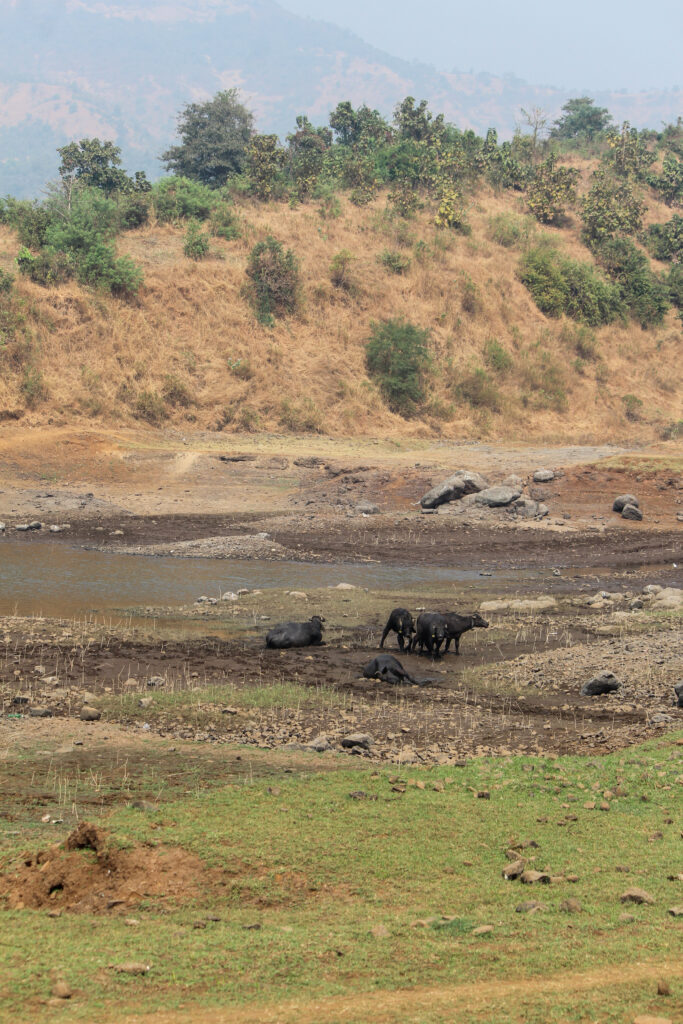
One of the most wonderful aspects of wilderness is that it does not place any demands on our attention. We are free to focus on what captures our interest. A bird chirping from high in a tree, clouds, the breeze, water flowing in a stream, the rustling of leaves, or looking deep into a dark night sky.
Sometimes we should go in the wild to do absolutely nothing. It helps reconnecting with the natural environment and understanding that we are part of a much larger universe. Time spent in nature is a precious commodity that’s sadly rare in our developed world. Sometimes the purity of our own experience is needed to understand the essence of life.
And that’s what this weekend break did to our soul. It renewed our spirit. We actually loved the feeling of being outside. Fully alive. Free. Soaking in the view of the stars, the sunset, wildflowers, trees, streams, and the solitude and silence that embrace them.
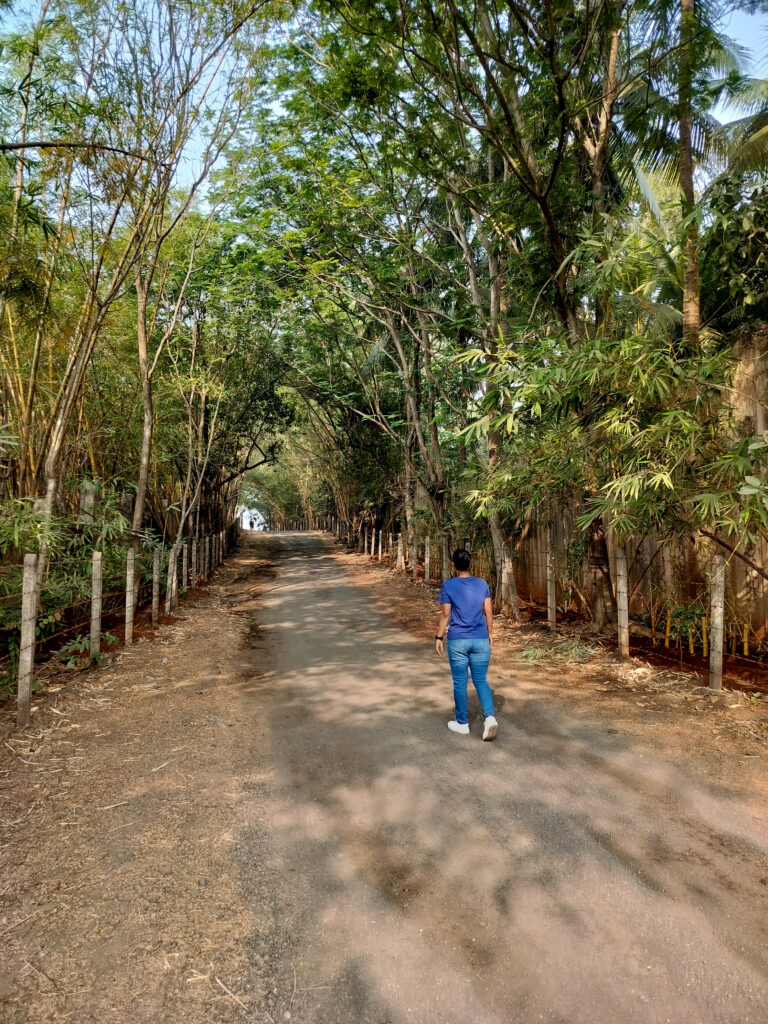
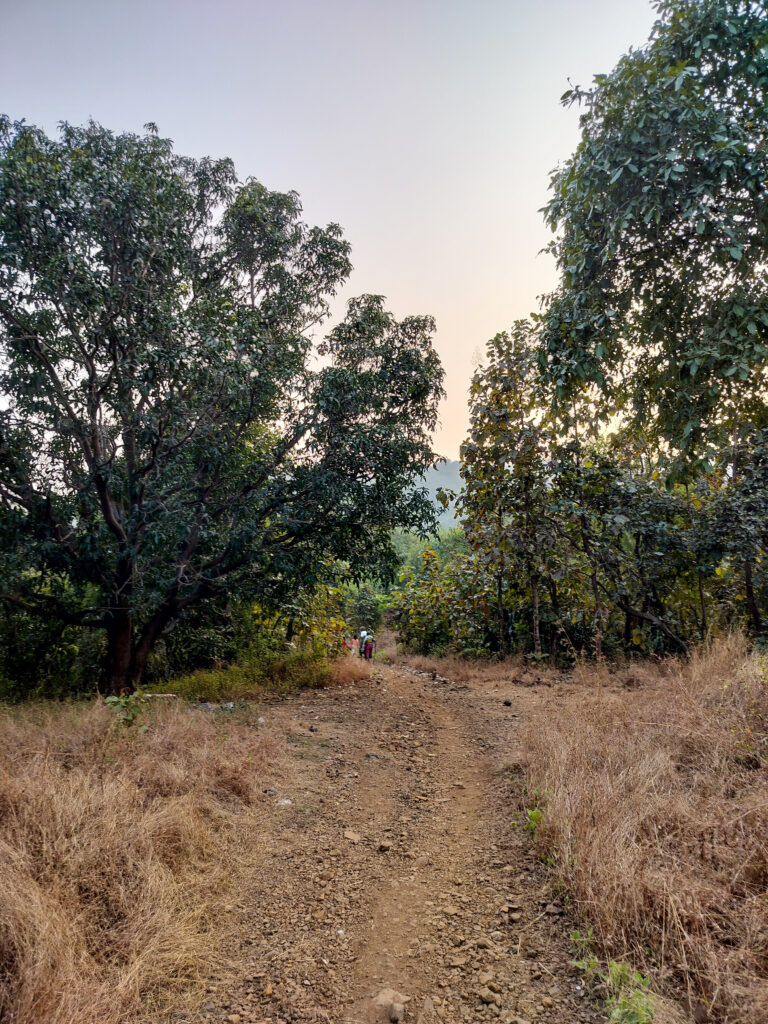
‘Nowhere can a man find a quieter or more untroubled retreat than his own soul’— Marcus Aurelius
